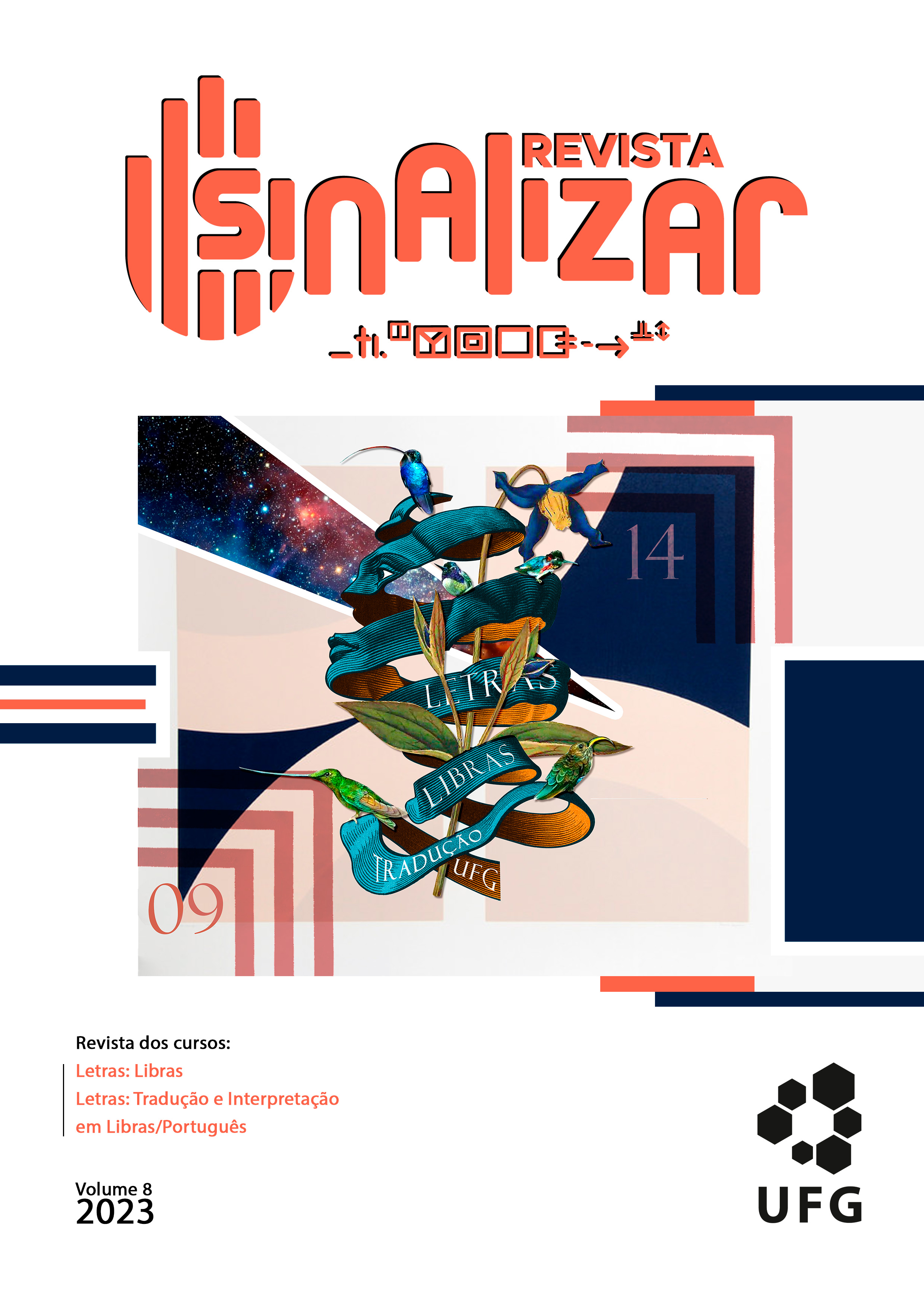Wrist and fingers kinesiology and predilection of hand configuration in Brazilian Sign Language
DOI:
https://doi.org/10.5216/rs.v8.75129Keywords:
hand configuration; phonetic restriction; kinesiology; Brazilian Sign Language.Abstract
In this paper, we identify the prevalence (and inexistence) of hand configurations in Brazilian Sign Language (Libras) in which only one of the fingers is extended, and we discuss the findings from the anatomical and muscular system of the wrist and finger joints. The kinesiology of upper limbs can justify some movement combinations and hand configuration patterns in sign languages (CRASBORN, 2012; MENDEL, 1979; SMITH, WEISS e LEHMKUHL, 1997; WOOKWARD, 1982; 1987). Our corpus of analysis was the Trilingual Illustrated Encyclopedic Dictionary of Brazilian Sign Language (CAPOVILLA; RAPHAEL, 2001). From the data, we observed that Libras has extended thumb, extended index, and extended little finger configurations, and does not have extended middle and extended ring finger. This pattern of manifestation in Libras is predicted typologically and can be justified from the physiology of wrist and finger movements. The independent extension movement of the ring finger and middle finger requires greater effort, as there are no specific muscles that allow the isolated and independent movement of these segments. Moving them generates the recruitment of a single muscle that tends to move the other fingers. Differently, the distending movement of the thumb, extension of the index finger and extension of the little finger, independently, is performed by specific (and individual) muscles for these actions. Still in relation to Libras, the extended index hand configuration is more prevalent, followed by extended thumb and extended little finger. The findings and suggestions presented in this paper are restricted to the analyzed data.
Downloads
References
CAPOVILLA, Fernando César; RAPHAEL, Walkiria Duarte. Dicionário enciclopédico ilustrado trilíngue: Língua de Sinais Brasileira de M a Z. São Paulo: Edusp, 2001. 2 v.
CRASBORN, Onno. Phonetics, phonology and prosody. In: PFAU, Roland; STEINBACH, Markus; WOLL, Bencie (ed.). Sign Language: an international handbook. Berlin: Mouton de Gruyter, 2012. cap. 1. p. 4-20.
JOHNSTON, Trevor; SCHEMBRI, Adam. On defining lexeme in a signed language. Sign Language & Linguistics, [s. l.], v. 7, n. 1, p. 115-185, 1999.
MENDEL, Mark A. Natural constraints in sign language phonology: data from anatomy. Sign Language Studies, [s. l.], v. 24, p. 215-229, fall 1979.
NASCIMENTO, Cristiane Batista. Empréstimos linguísticos do português na Língua de Sinais Brasileira - LSB: línguas em contato. 2010. Dissertação (Mestrado em Linguística) – Instituto de Letras, Universidade de Brasília, Brasília, 2010.
QUER, Josep et al. (ed.). SignGram Blueprint: a guide to sign language grammar writing. Berlin, Boston: De Gruyter Mouton, 2017.
SMITH, Laura K.; WEISS, Elizabeth L.; LEHMKUHL, L. Don. Cinesiologia Clínica de Brunnstrom. 5. ed. São Paulo: Manole, 1997.
WOODWARD, James. Single finger extension: form a theory of naturalness in sign language phonology. Sign Language Studies, v. 37, p. 289-304, winter 1982.
WOODWARD, James. Universal constraints across sign languages: single finger contact handshapes. Sign Language Studies, [s. l.], v. 57, p. 375-385, winter 1987.
Downloads
Published
How to Cite
Issue
Section
License

This work is licensed under a Creative Commons Attribution-NonCommercial 4.0 International License.
Copyright

This work is licensed under a Creative Commons Attribution-NonCommercial-NoDerivatives 4.0 International License.
Autores que publicam nesta revista concordam com os seguintes termos:
Autores mantém os direitos autorais e concedem à revista o direito de primeira publicação, com o trabalho simultaneamente licenciado sob a Creative Commons Attribution License que permitindo o compartilhamento do trabalho com reconhecimento da autoria do trabalho e publicação inicial nesta revista.
Autores têm autorização para assumir contratos adicionais separadamente, para distribuição não-exclusiva da versão do trabalho publicada nesta revista (ex.: publicar em repositório institucional ou como capítulo de livro), com reconhecimento de autoria e publicação inicial nesta revista.







